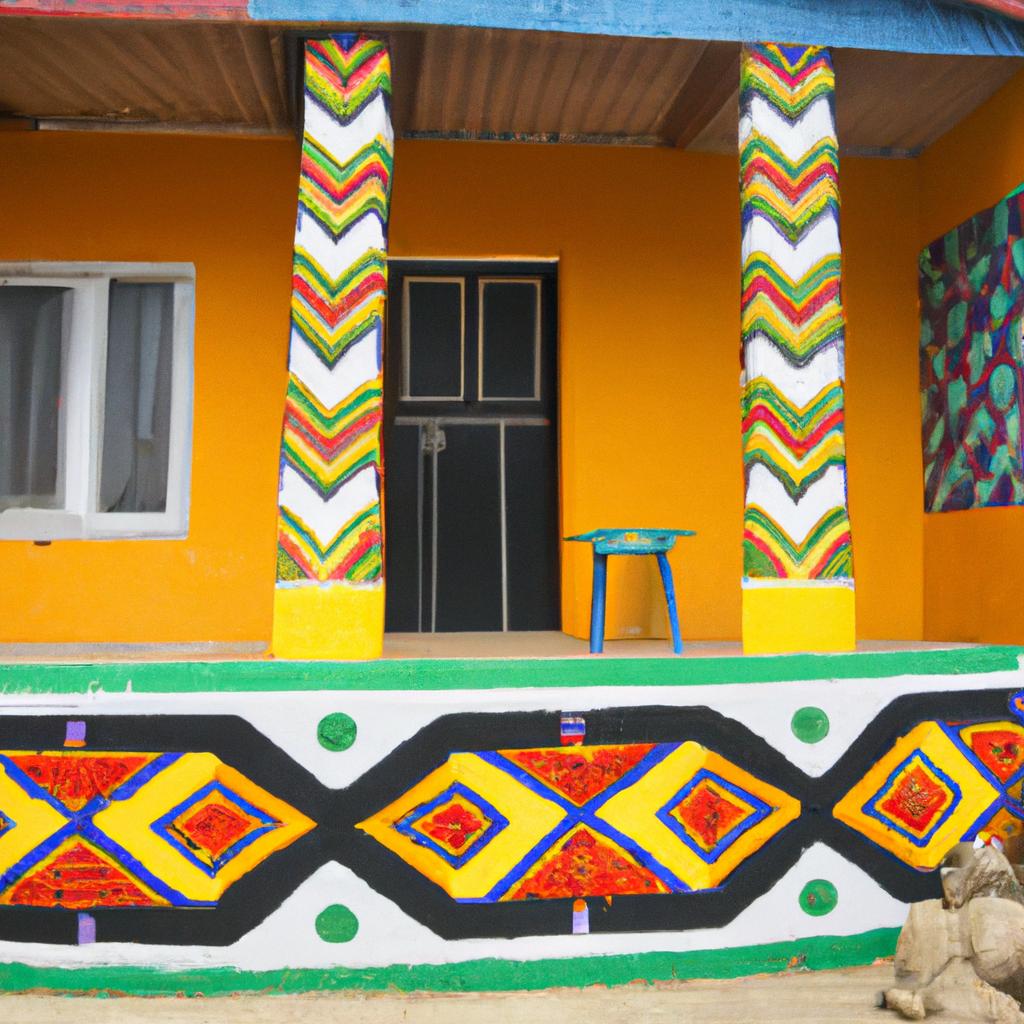Africa, a continent steeped in rich culture and enduring traditions, holds a unique tradition that showcases its vibrant heritage: the art of painting houses. This article delves into the history, importance, and significance of painted houses across Africa. Join me on this journey as we explore the traditional and contemporary painting techniques, the symbolism and meaning behind these intricate designs, as well as the economic and social impact of painted houses in Africa.
Traditional African House Painting Techniques
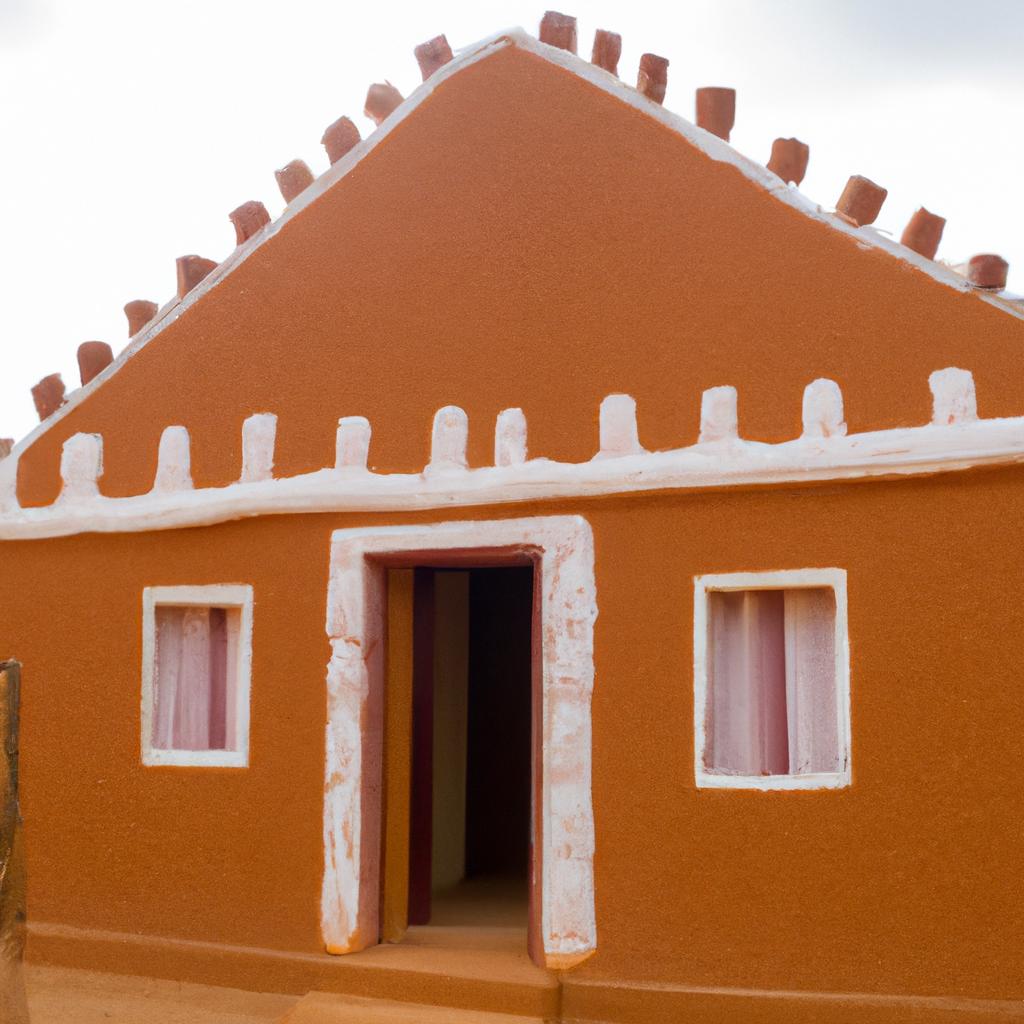
Traditional African house painted with natural earth tones.
Overview of Traditional Painting Techniques
Traditional African house painting techniques vary from region to region, each with its unique style. Before the advent of modern paints, natural materials such as mud, cow dung, and plant extracts were used. For example, West Africa employs a technique called “Mud Painting,” where mud is used to create intricate designs on house walls. In Central Africa, vibrant colors and geometric patterns adorn their homes.
Explanation of Materials Used in Painting
In addition to mud, cow dung is a common material used for house painting in Africa, especially among the Maasai people of East Africa. Plant extracts like henna, indigo, and beetroot are also employed to create natural pigments for the designs.
How These Techniques Have Evolved Over Time
As modern paints emerged, traditional painting techniques in Africa evolved. Today, a combination of traditional and modern methods is employed. Stencils are used to create intricate designs quickly and accurately, while in some areas, stencils are replaced by free-hand painting. These techniques continue to hold cultural and social significance in African societies.
Symbolism and Meaning of Painted Houses in Africa
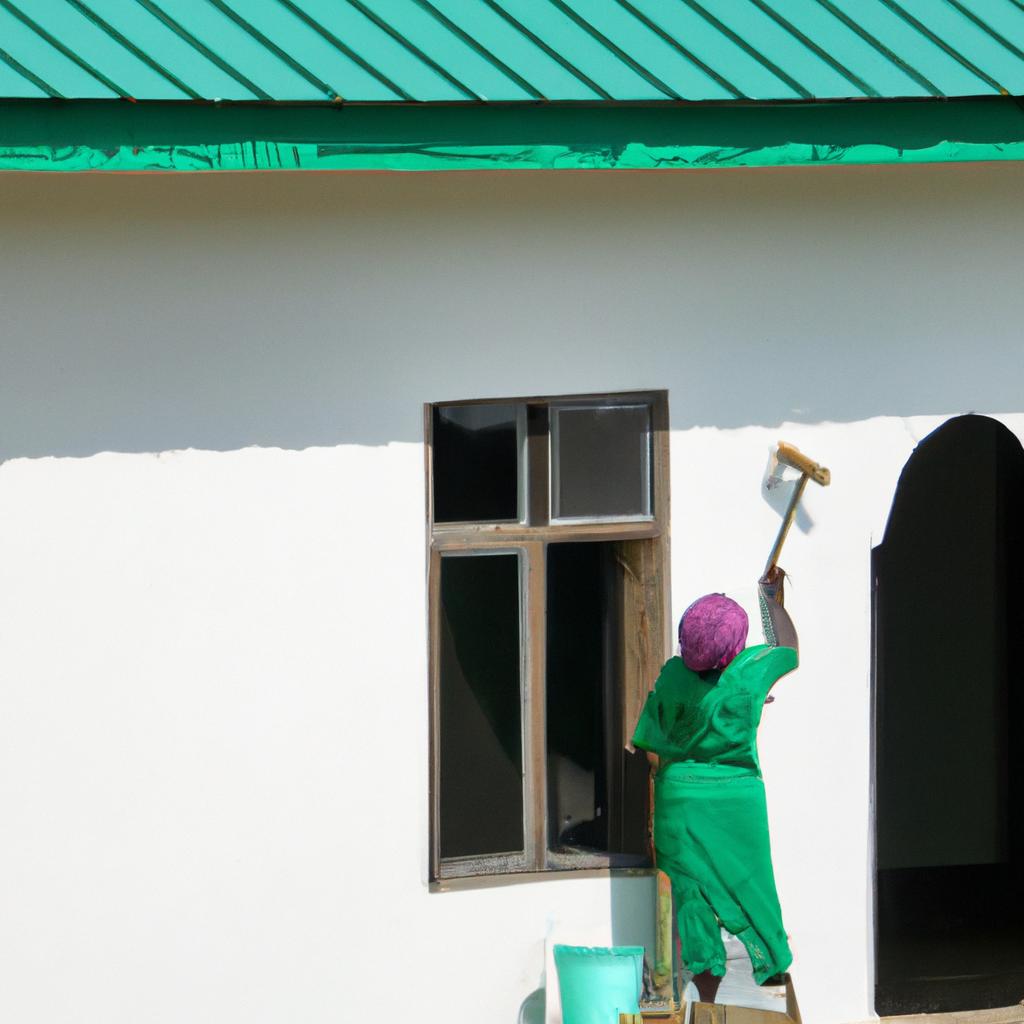
African woman painting the exterior of a house with a brush.
Different Colors and Their Meanings
Colors play a vital role in African culture, representing various emotions, values, and beliefs. In West Africa, blue signifies love, harmony, and peace, while in East Africa, it symbolizes the sky and the heavens. Red represents strength and vitality, yellow symbolizes wealth and prosperity, green is associated with nature and growth, and white symbolizes purity and innocence.
Patterns and Designs Used in Different Regions
Patterns and designs in African house painting vary across regions and reflect cultural beliefs. West Africa employs geometric patterns to signify interconnectedness, while circular patterns in Central Africa represent the cyclical nature of life. In Southern Africa, animal motifs are prevalent, highlighting the connection between humans and the natural world.
Importance of Painted Houses in African Rituals and Ceremonies
Painted houses hold great significance in African rituals and ceremonies. During weddings, the bride’s family often paints her new home to symbolize their wealth and status. Painted houses are also believed to ward off evil spirits, providing protection and positive energy.
Contemporary African House Painting Techniques
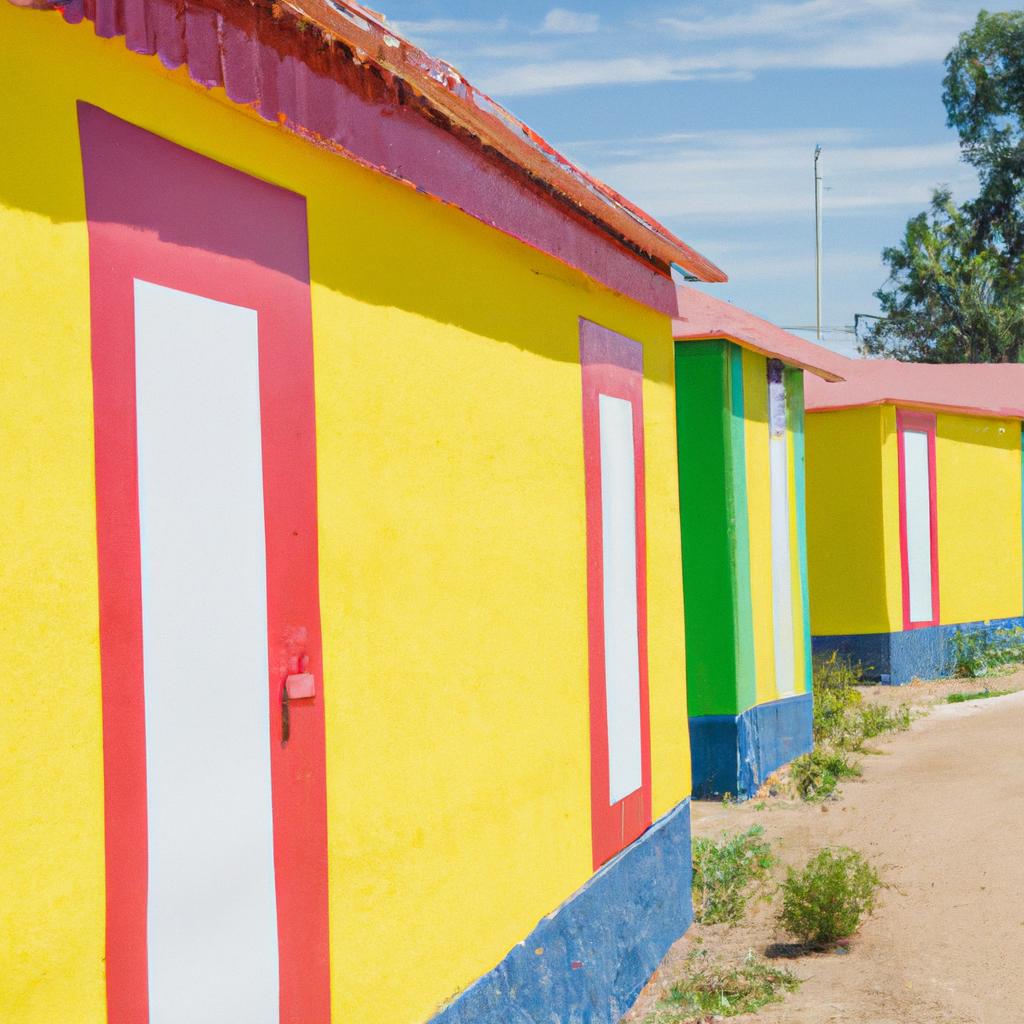
Row of brightly painted houses in an African village.
Contemporary African house painting techniques have embraced innovation and new materials, resulting in stunning designs that reflect modern Africa.
Overview of Modern Painting Techniques
Acrylic paints have revolutionized house painting in Africa. These water-based paints dry quickly and offer a wide range of colors, allowing artists to create intricate designs. Stencils have further simplified the process, enabling artists to replicate patterns with precision.
Advancements in Materials and Technology
Advancements in technology have also impacted house painting in Africa. Airbrushing has allowed artists to create more detailed and realistic designs. Furthermore, digital printing enables artists to design on computers and directly apply those designs to house surfaces, saving time and allowing for more complex patterns.
Examples of Contemporary Painted Houses in Africa
Contemporary painted houses can be found across Africa, from bustling city streets to serene rural villages. One notable example is the township of Soweto in South Africa, where houses are adorned with bold colors and geometric patterns, creating a breathtaking visual display.
Economic and Social Impact of Painted Houses in Africa
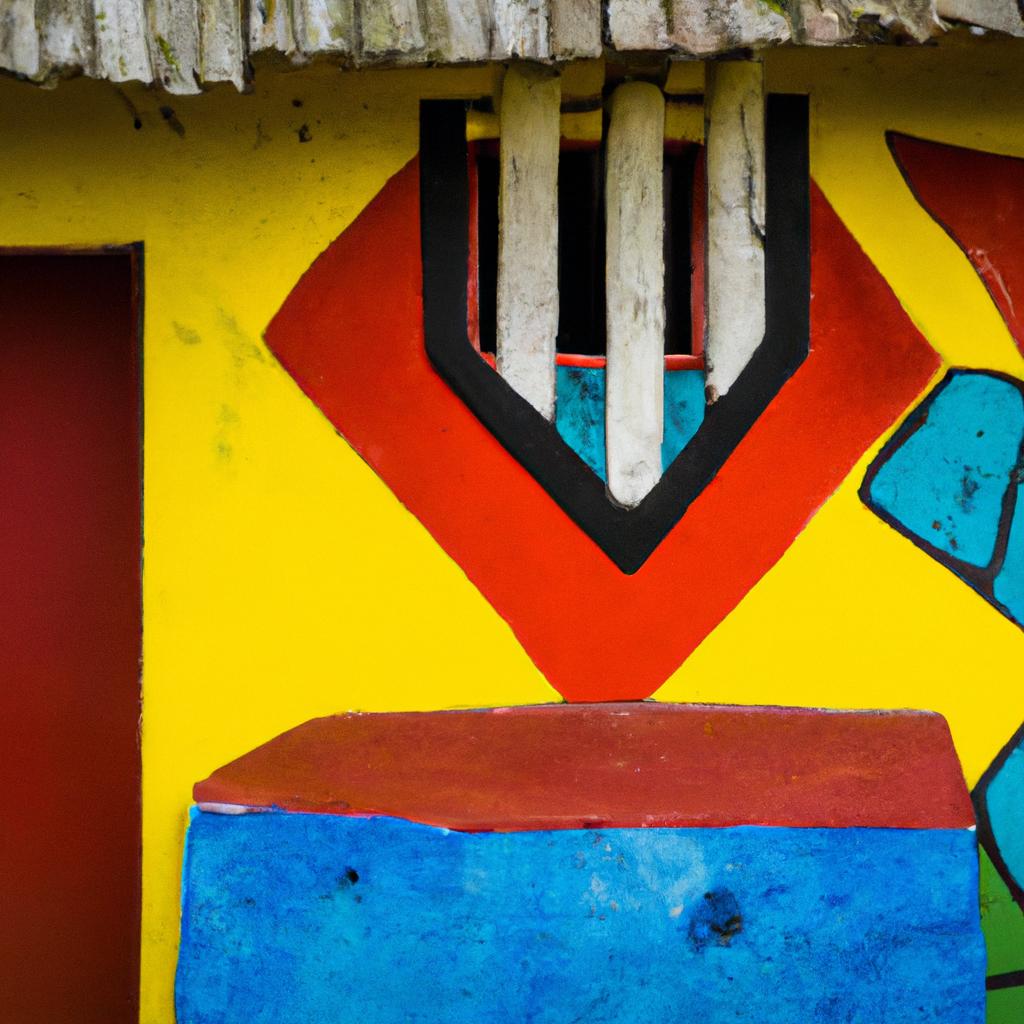
Close-up of an African house painted with bold and vibrant colors.
Painted houses have a profound impact on Africa’s economy and society. They contribute to local economies, preserve African cultures and traditions, and promote tourism.
Contribution to Local Economies
Painting houses has given rise to many small businesses and job opportunities. Local communities sustain themselves by painting houses for others, creating a thriving industry. Moreover, tourists flock to witness painted houses, resulting in increased demand for local goods and services, further stimulating the economy.
Preservation of African Cultures and Traditions
Painted houses are an integral part of Africa’s cultural heritage, reflecting diverse beliefs and values. By preserving the tradition of painting houses, Africans ensure the preservation of their cultural legacy for future generations.
Promotion of Tourism in Africa
Tourists are captivated by the beauty and intricacy of painted houses, attracting them to Africa. This significant tourist interest promotes Africa’s cultural diversity, ultimately bolstering the local economy and creating employment opportunities.
Conclusion
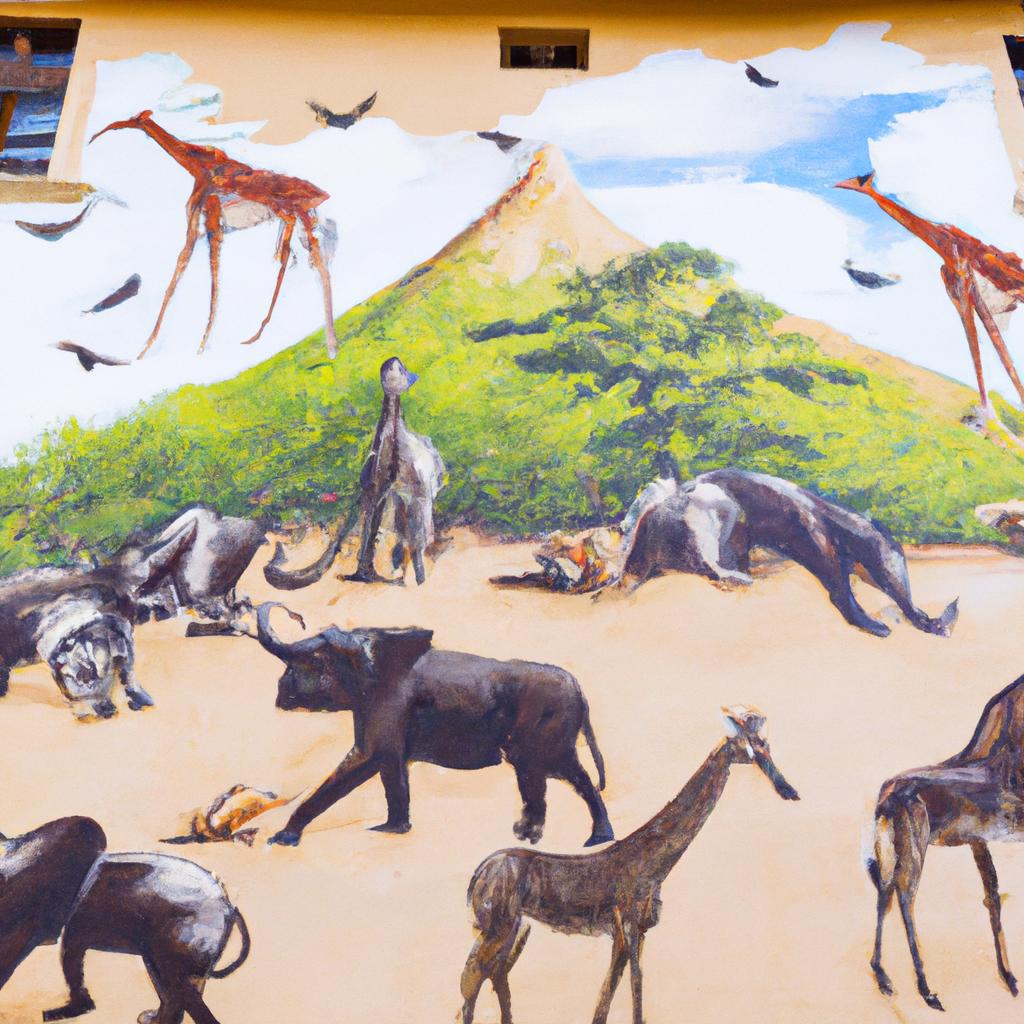
Mural of African wildlife painted on the exterior wall of a house in Africa.
In conclusion, painted houses in Africa stand as a testament to the continent’s rich cultural heritage. They hold more than mere decorative value; their significance spans cultural, social, and economic realms. Traditional painting techniques have gracefully evolved, giving rise to contemporary styles that embrace Africa’s modernity.
Painted houses contribute to local economies, create job opportunities, preserve African cultures and traditions, and promote tourism. Let us appreciate and celebrate Africa’s beauty and diversity by supporting local artists and craftsmen who keep these traditions alive. Together, we can ensure that Africa’s painted houses continue to thrive, inspiring generations to come.
Reference:
- African House Painting Techniques
- The cultural significance of painted houses in Africa
- The significance of African house painting
This article is brought to you by TooLacks, celebrating Africa’s cultural heritage.
